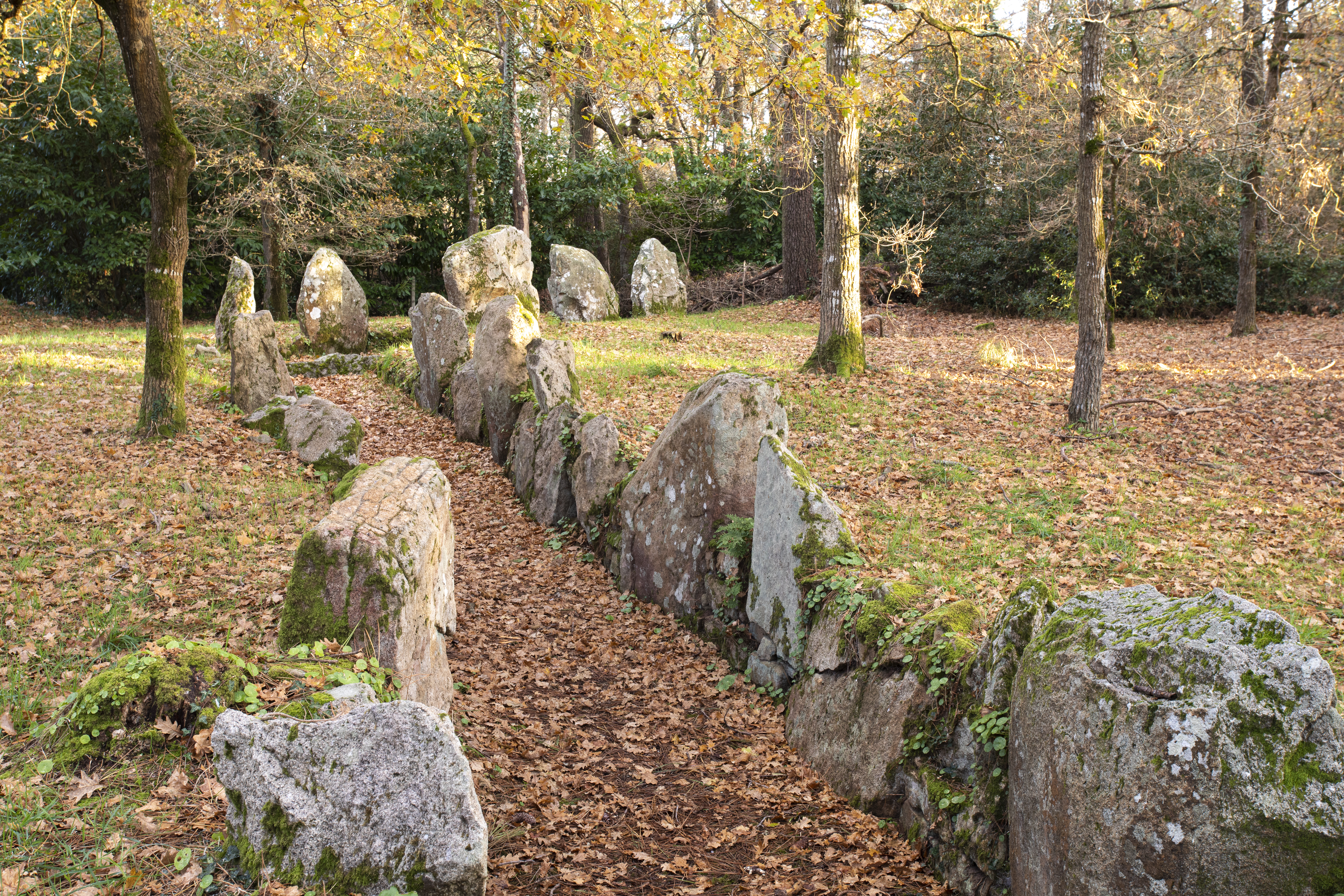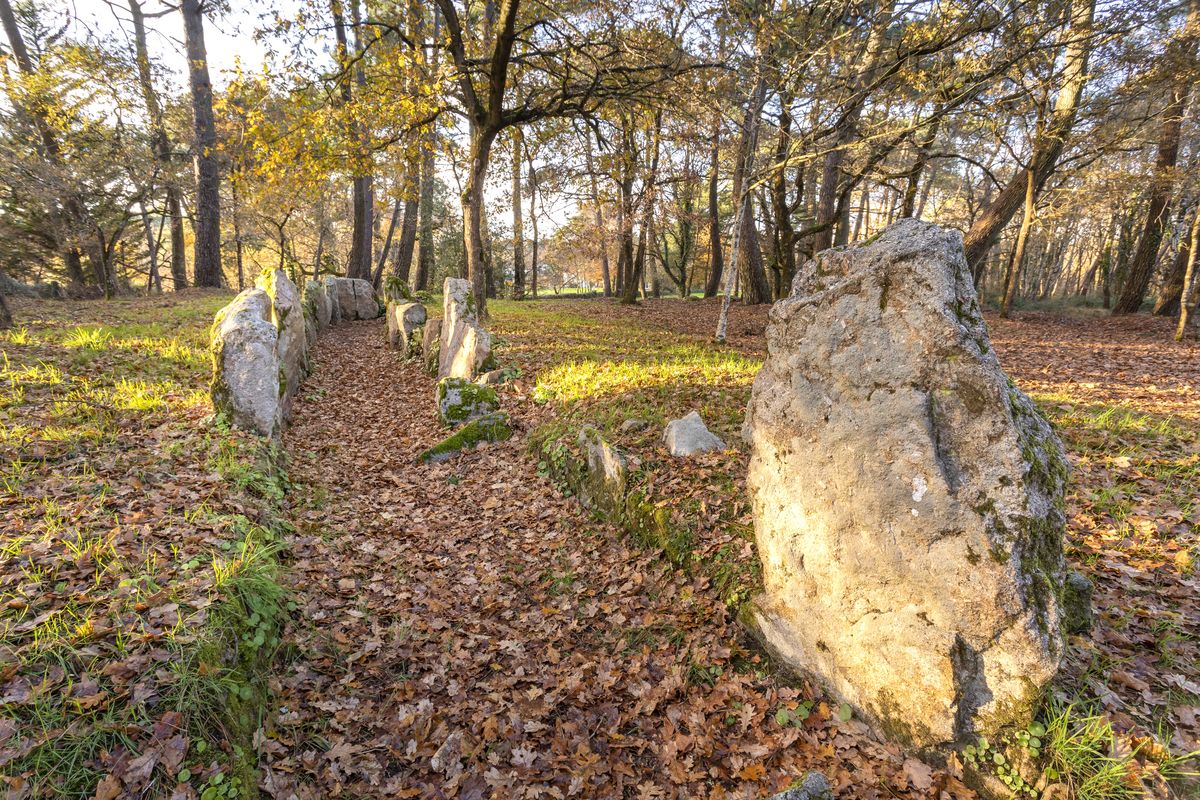The Luffang monument is an L-shaped megalithic grave; this type of architecture is relatively rare, and found mostly in southern Morbihan. The passage is formed by two roughly parallel 20-metre-long lines of orthostat slabs, themselves forming a right angle 7 metres from the south-facing entrance. The circular tumulus is 46 metres in diameter, and is partially preserved around the monument.
Zacharie Le Rouzic excavated the L-shaped passage in 1898 using funds provided by his friend Charles Keller. He emptied the passage and gathered the pottery fragments left by earlier excavators. He also re-erected certain fallen slabs in the passage. No capstone had been preserved; he concluded that this was due to removal by quarry workers, who had left marks on the blocks (stippling in the stone blocks).
Some of the passage slabs feature engravings. One of them was moved to the Carnac Museum by Zacharie Le Rouzic; the engraving in question now serves as the Museum’s logo. Le Rouzic restored the monument for a second time in 1937 and had it protected as a historic monument. The site, which overlooks the Crac’h river, stands today in a wooded area. There are signs to it from the village road, and a hiking trail passes close by along the adjacent road.

